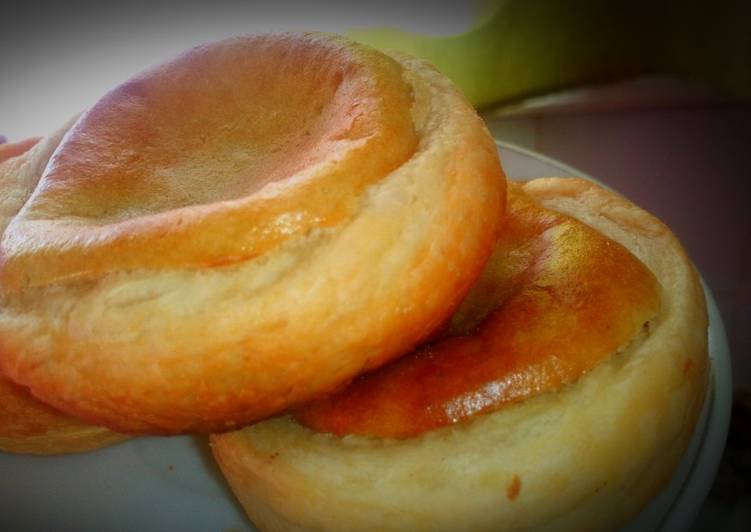Pastel de nata. This slightly streamlined recipe for the world-famous pasteis de nata, or Portuguese custard tarts, uses just few basic ingredients but requires numerous steps and a certain amount of finesse. The results are so worth it, though, you'll want to make a double batch. The extra moisture inside the sticky dough, activated by a very hot oven.
 The very first natas were created by monks at the Jerónimos Monastery in the civil parish of Belém, Lisbon.
These pasteis de nata, or Portuguese custard tarts, are a specialty of Belem, near Lisbon.
The pastries have crisp, puff pastry crusts that are filled with a luscious baked egg custard.
Vous pouvez avoir Pastel de nata using 15 ingrédients et 8 pas. Voici comment réussir ça.
The very first natas were created by monks at the Jerónimos Monastery in the civil parish of Belém, Lisbon.
These pasteis de nata, or Portuguese custard tarts, are a specialty of Belem, near Lisbon.
The pastries have crisp, puff pastry crusts that are filled with a luscious baked egg custard.
Vous pouvez avoir Pastel de nata using 15 ingrédients et 8 pas. Voici comment réussir ça.
Ingrédients de Pastel de nata
- Préparez de La pâte feuilleté.
- Préparez 150 g de Farine.
- Vous avez besoin 10 g de Beurre fondu.
- C'est 70 ml de d'eau.
- C'est 3 g de Sel.
- Préparez 90 g de Matière grasse (beurre de feuilletage).
- Préparez de La crème.
- Préparez 160 g de Sucre.
- Préparez 90 ml de d'eau.
- Préparez 1 de Batton de cannelle.
- Vous avez besoin de Zeste de citron.
- Vous avez besoin 250 ml de Lait.
- Vous avez besoin 30 g de farine.
- Vous avez besoin 3 de jaunes d'œufs.
- Vous avez besoin 1 de œuf entière.
You can make the pastry and filling up to several days ahead and assemble them right before baking. Because the egg whites were used for starching clothes, the nuns and the monks were faced with a surplus of egg yolks. Many have won awards including the O Melhor Pastel de Nata (the best pastel de nata ) award. Despite all of these new cafés, Pastéis de Belém hasn't really been affected.
Pastel de nata instructions
- Préparez la pâte, ajoutez la farine, l'eau, sel, beurre fondu, ramassez la pâte.
- Étalez la pâte à l'aide d'un rouleau à pâtisserie, mettez la matière grasse au milieu et pliez la pâte en couvrent le beurre.
- Étalez la pâte, puis retournez la et l'étalez de deuxième côté, pliez la pâte encore une fois, répétez l'opération 2 fois.
- Étalez la pâte pour la dernière fois est commencez à roulé.
- Coupez des morceaux, mettez-les dans un moule.
- Préparez le sirop, dans une casserole ajoutez l'eau + sucre + un Batton de cannelle + le zeste de citron, laissez bouillir.
- Préchauffer le four.
- Dans une autre casserole à feu doux ajoutez les 30 g de farine, ajoutez le lait progressivement en mélangent sans arrêt, lorsque le mélange épaississe enlevez la casserole du feu, rajoutez le sirop petit à petit en remuant, incorporez les 3 jaunes d'œufs et un œuf entière mélangez bien, versez la crème dans les fond de tarte, enfournez à 250° pendant 15 mn.
Portuguese Custard Tart, based on a Portuguese recipe from the XVIII century), filled with a traditional egg custard. To be correct, they are Pasteis de Nata, or Pastel de Nata if you are talking about them singularly. They are an institution in Portugal, where they were founded. Imposters around the world have tried to mirror these tasty treats, often producing something that might even resemble the original pastry, but the proof, as they say, is in the pudding. Outside Portugal, they are particularly popular in other parts of Western Europe, Asia and former Portuguese colonies, such as Brazil and Macau.